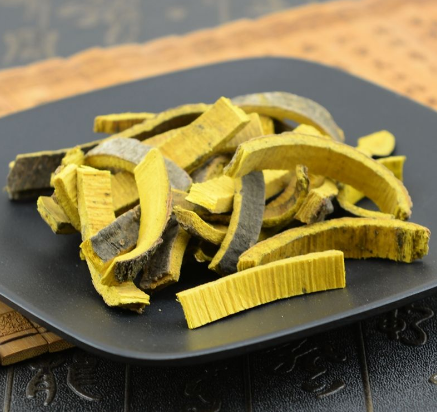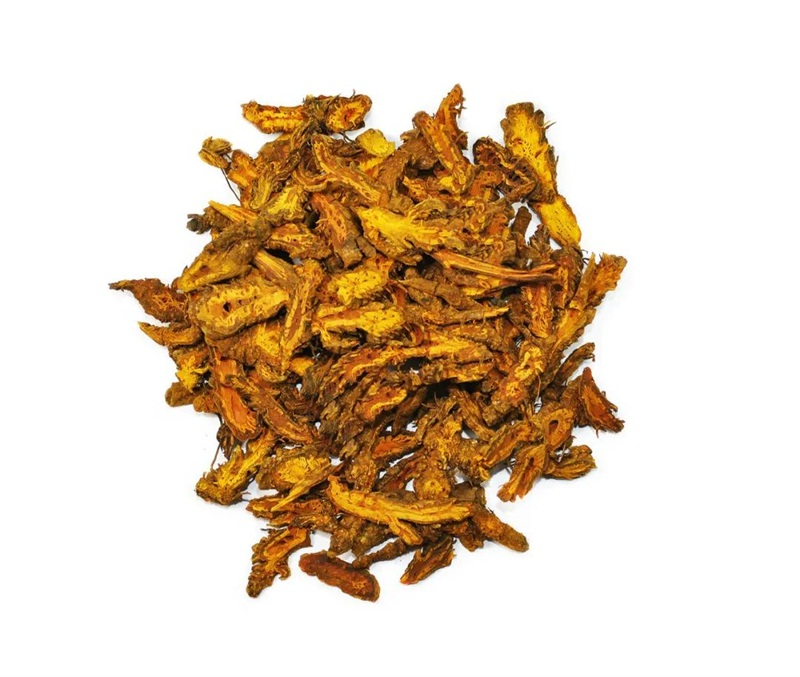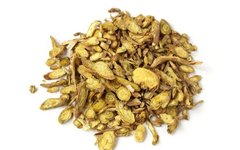The Three Huang Brothers—Huang Qin (Scutellaria baicalensis), Huang Lian (Coptis chinensis), and Huang Bai (Phellodendron amurense)—are well-known in Traditional Chinese Medicine (TCM). Although they share many common characteristics, they also possess distinct differences. How can we differentiate between them?


Huang Qin (Scutellaria baicalensis)

Huang Qin is the dried root of the plant Scutellaria baicalensis, belonging to the Lamiaceae family. It can clear heat, dry dampness, drain fire, detoxify, stop bleeding, and stabilize pregnancy. It is primarily used for damp-heat conditions, summer heat, chest oppression, nausea, damp-heat fullness, diarrhea, jaundice, lung heat cough, high fever with thirst, blood heat with vomiting or nosebleeds, carbuncles, and restless fetus.

Huang Bai (Phellodendron amurense)

Huang Bai is the dried bark of the Phellodendron amurense tree, belonging to the Rutaceae family, commonly referred to as “Chuan Huang Bai.” It can clear heat, dry dampness, drain fire, and detoxify. It is mainly used for damp-heat diarrhea, jaundice with dark urine, vaginal discharge with itching, painful urination, beriberi, bone steaming heat, night sweats, nocturnal emissions, carbuncles, and eczema. Salt-prepared Huang Bai nourishes yin and lowers fire, used for yin deficiency with excess fire and night sweats.

Huang Lian (Coptis chinensis)

Huang Lian is the dried rhizome of the plants Coptis chinensis, Coptis teeta, or Coptis deltoidea, belonging to the Ranunculaceae family. These three types are commonly referred to as “Wei Lian,” “Ya Lian,” and “Yun Lian.” It can clear heat, dry dampness, and drain fire. It is primarily used for damp-heat fullness, nausea with sour regurgitation, diarrhea, jaundice, high fever with delirium, excessive heart fire, irritability, palpitations, blood heat with vomiting or nosebleeds, red eyes, toothache, diabetes, and external treatment for eczema and suppurative dermatitis.

Differences in the Effects of the Three Huang Herbs
Although Huang Qin, Huang Lian, and Huang Bai are all bitter and cold herbs, especially Huang Lian, which is the most bitter, they all possess the ability to clear heat, dry dampness, and drain fire. However, there are still slight differences among them.
Different Families
Despite their similar names, the “Three Huangs” are actually three different herbs from different families: Huang Qin is the dried root of the perennial herb Scutellaria baicalensis from the Lamiaceae family; Huang Lian is the dried rhizome of the perennial herb Coptis chinensis, Coptis teeta, or Coptis deltoidea from the Ranunculaceae family; Huang Bai is the dried bark of the deciduous tree Phellodendron amurense from the Rutaceae family. The differences in family also imply differences in their growth seasons, habits, states, and environments, which reflect in their meridian affinities and efficacy in practical applications.
Different Meridian Affinities
In ancient medical literature, “meridian affinity” is also referred to as “guiding channels” or “directing channels,” which refers to the theoretical positioning of the effects of Chinese herbs. According to the “Changsha Pharmacopoeia,” the meridian affinities of the “Three Huangs” differ: Huang Qin enters the Gallbladder meridian (足少阳胆经) and the Liver meridian (足厥阴肝经); Huang Lian enters the Heart meridian (手少阴心经); Huang Bai enters the Liver meridian (足厥阴肝经) and the Spleen meridian (足太阴脾经).
Differences in Efficacy
Huang Qin is effective in clearing lung heat and damp-heat from the liver and gallbladder, especially in clearing damp-heat from the middle and upper jiao. Additionally, Huang Qin has the ability to stop bleeding and stabilize pregnancy, regulating restless fetus due to blood heat. Different processing methods of Huang Qin yield different effects: raw for clearing heat, stir-fried for stabilizing pregnancy, wine-fried for clearing upper jiao heat, and charred for stopping bleeding.
Huang Lian is extremely bitter and cold, excelling in clearing damp-heat from the middle jiao. Individuals with damp-heat in the middle jiao often present with nausea, dry heaving, and abdominal fullness; thus, Huang Lian can effectively treat discomfort caused by stomach heat, harmonizing the stomach and stopping vomiting while clearing stomach heat. Huang Lian can also be used to treat delirium and irritability caused by excessive heart fire. Externally, it can treat skin-related eczema and suppurative dermatitis. However, due to its extreme bitterness and cold nature, long-term use may harm the spleen and stomach, so it is not recommended for individuals with spleen and stomach deficiency and cold.
Huang Bai is effective in clearing damp-heat from the lower jiao, providing excellent therapeutic effects for damp-heat diseases of the kidneys and bladder. Different processing methods of Huang Bai yield different effects: raw for clearing heat and drying dampness, salt-fried for clearing and draining lower jiao fire, wine-fried for guiding the herb upward, clearing blood-heat dampness, and charred for stopping bleeding.
Although all three herbs have the effect of clearing heat and drying dampness, their directional effects differ. Clinical use should be based on syndrome differentiation to select the most appropriate herb.
References
[1] National Pharmacopoeia Commission. Chinese Pharmacopoeia [M]. Beijing: China Medical Science Press, 2020: 1088.
[2] Teng Lei, Chai Yuqi, Xin Yaojie, Yang Yi, Wei Ciyun. Exploring the Clinical Differences in Efficacy of Huang Qin, Huang Lian, and Huang Bai Based on the “Changsha Pharmacopoeia.” Journal of Shanghai University of Traditional Chinese Medicine, 2018, 0(2).
[3] Li Xueming. Discussion on the Chinese Herbs Huang Qin, Huang Lian, and Huang Bai. Modern Distance Education of Chinese Medicine, 2009, (8).

END

Scan the QR code for the Traditional Chinese Medicine service
Follow us
We will sincerely provide you
with pharmaceutical science popularization services


Ma’anshan City Traditional Chinese Medicine Hospital
Compiled by: Pharmacy Department Si Jiaqi
◆【Classic Formula】Ma Huang Tang
◆Attention to the Combined Use of Antibiotics and Chinese Medicine!
◆Digestive Stagnation—Jiao San Xian

